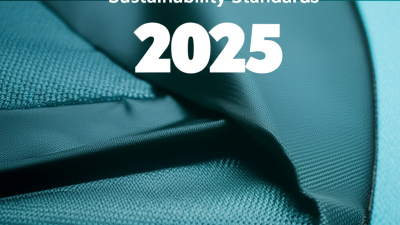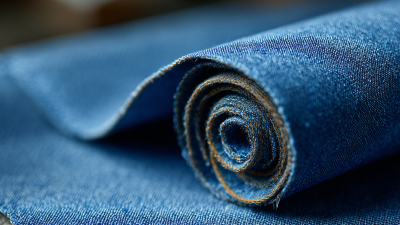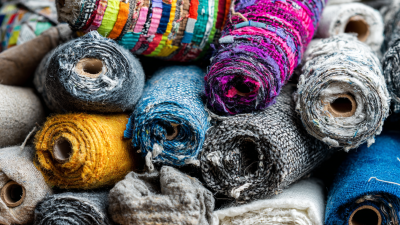The fashion industry is increasingly embracing sustainability as consumer demand shifts towards environmentally responsible practices. Among the innovative materials paving the way for a greener future is Recycled Nylon Fabric, which has garnered significant attention for its potential to mitigate the growing crisis of ocean plastics. This fabric is not only a testament to the ingenuity of sustainable manufacturing but also highlights the fashion industry's ability to transform waste into valuable resources.

Recycled Nylon Fabric, sourced primarily from discarded fishing nets and other nylon waste, represents a crucial step in reducing plastic pollution in our oceans. By repurposing materials that would otherwise contribute to environmental degradation, the textile industry can help preserve marine ecosystems while providing high-quality, durable products. This shift towards circular economy principles not only addresses the pressing issue of ocean plastics but also positions brands as responsible players in the global market.
As the demand for sustainable fashion continues to rise, Recycled Nylon Fabric stands as a symbol of hope and innovation. The impact of this material goes beyond its eco-friendliness; it encourages consumers to reconsider their purchasing habits and the lifecycle of the products they choose. In the following sections, we will explore the journey of recycled nylon, its benefits, and its promising role in reshaping the future of fashion.
Recycled nylon fabric is at the forefront of sustainable fashion, primarily due to its remarkable transformation of ocean plastics into high-quality textile. The process begins with the collection of discarded fishing nets and other plastic debris from the oceans, which are notorious for harming marine life. These materials are then cleaned and processed into pellets through a series of mechanical and chemical methods. This feedstock serves as the basis for spinning new nylon fibers, making it an environmentally friendly alternative to virgin nylon, which is derived from fossil fuels.
Once the nylon fibers are extruded, they can be woven into fabrics suitable for various applications, ranging from activewear to luxury apparel. This innovative recycling process not only helps reduce the volume of plastic waste in the oceans but also significantly lowers the carbon footprint compared to traditional fabric production. By incorporating recycled nylon into their collections, fashion brands contribute to a circular economy, promoting sustainability while providing consumers with stylish and eco-conscious options. This shift not only raises awareness about ocean plastic pollution but also inspires a growing movement toward responsible consumption in the fashion industry.
The environmental impact of nylon production is significant, with the textile industry being a major contributor to pollution. Currently, synthetic fibers like nylon account for 60% of clothing materials, leading to detrimental effects on both the environment and marine ecosystems. Every year, abandoned or discarded fishing gear contributes to ocean plastic pollution, constituting a substantial part of the estimated 8 million tons of plastic that enter the oceans annually. These fishing nets, primarily made from nylon, can break down into microplastics, harming marine life and entering the food chain.
The rise of recycled nylon fabric represents a potential solution to mitigate these issues. Innovative materials are being developed that not only aim to reduce dependency on petroleum-derived nylon but also address the pollution crisis by degrading in ocean environments. Research shows that efficient waste management of fishing net waste can significantly reduce microplastic leakage into oceans. As the fashion industry continues to grapple with sustainability challenges, embracing recycled materials is a step towards reducing carbon footprints and tackling the persistent issue of ocean plastics.
The fashion industry is witnessing a transformative shift with the rise of recycled nylon fabric, driven by a growing awareness of sustainability and ocean conservation. Key brands are leading this charge by innovating their materials and production processes to incorporate recycled nylon, which is primarily made from discarded fishing nets and other ocean plastics. Companies like Patagonia and Reebok have set the standard by creating stylish, functional products that not only reduce waste but also highlight the importance of protecting our oceans.
When exploring sustainable fashion, consumers can look for labels that utilize recycled materials and engage in responsible production practices. Supporting brands that are transparent about their sourcing and manufacturing processes is crucial. A tip for eco-conscious shoppers is to check for certifications that indicate the use of recycled materials, such as Global Recycled Standard (GRS) or OEKO-TEX, which ensure that the products meet environmental and social standards.
Additionally, consider investing in timeless pieces rather than fast fashion, thereby promoting a circular economy. Look for brands that offer take-back programs to recycle old garments, which further helps in reducing ocean plastics. By making informed choices, consumers can significantly contribute to the movement towards sustainable fashion while supporting brands that prioritize the health of our planet.
Consumer awareness plays a pivotal role in driving sustainable choices within the fashion industry, particularly as concerns about ocean plastics rise. A report from the Global Fashion Agenda notes that 79% of consumers believe it is important for brands to take a stand against plastic pollution. This heightened awareness has led to an increased demand for recycled materials, with recycled nylon fabric emerging as a key player in sustainable fashion. The adoption of materials such as ECONYL®, which is made from discarded fishing nets and other nylon waste, demonstrates how innovative solutions can tackle both fashion's environmental impact and the crisis of ocean plastics.
Furthermore, a survey conducted by McKinsey & Company reveals that 67% of consumers consider sustainability when making purchasing decisions. This shift in consumer behavior is prompting brands to re-evaluate their material sourcing and production processes. By choosing to invest in recycled nylon and implementing circular practices, the fashion industry can significantly reduce its reliance on virgin materials, thereby lowering contributions to ocean pollution. The move towards sustainable textiles not only benefits the environment but also resonates with a growing market segment that prioritizes ethical consumption, highlighting the importance of consumer awareness in shaping a more sustainable future.
| Dimension | Data |
|---|---|
| Percentage of Ocean Plastics Recycled into Nylon | 30% |
| Estimated Number of Plastics Bottles Used per Ton of Recycled Nylon | 600 |
| Growth Rate of Recycled Nylon Fabric Market (2020-2025) | 15% CAGR |
| Consumer Awareness of Recycled Materials in Fashion (2023) | 67% |
| Impact of Sustainable Choices on Purchase Decisions | 74% |
| Percentage of Consumers Willing to Pay More for Sustainable Fashion | 52% |
The future of sustainable fashion is increasingly being shaped by advancements in recycled fabrics, particularly in addressing the issue of ocean plastics. One notable innovation is the development of color-changing textiles by a research team in Hong Kong, which utilizes AI algorithms and small cameras to alter fabric hues through gestures. This technology not only enhances the aesthetic appeal of garments but also aims to reduce textile waste, promoting a more sustainable lifecycle for fashion items.
As the demand for eco-friendly solutions grows, the outdoor clothing market is poised for significant expansion. Projections indicate that its value could nearly double from $3.9 billion in 2022 to about $6.99 billion by 2030, underscoring a robust compound annual growth rate of 7.5%. This growth is driven by technological advancements that facilitate the integration of recycled materials into popular products. These innovations herald a new era for fashion brands, not only in enabling sustainable practices but also in meeting consumer expectations for environmentally responsible fashion.
This chart illustrates the growth of recycled nylon fabric production from 2019 to 2023. The rising trend reflects the increasing shift towards sustainable fashion practices and the impact of recycled materials in reducing ocean plastics.






